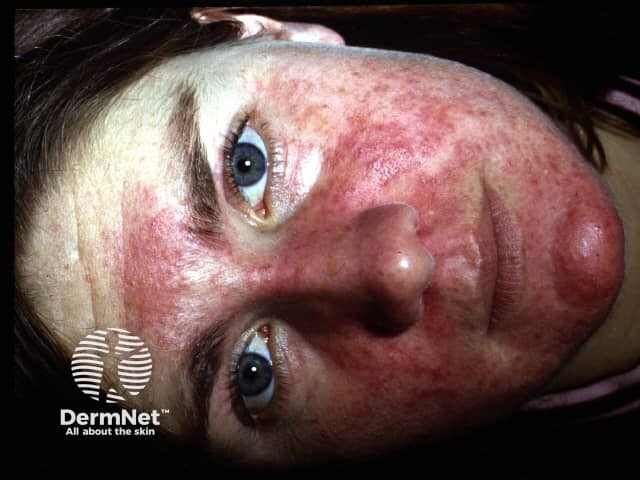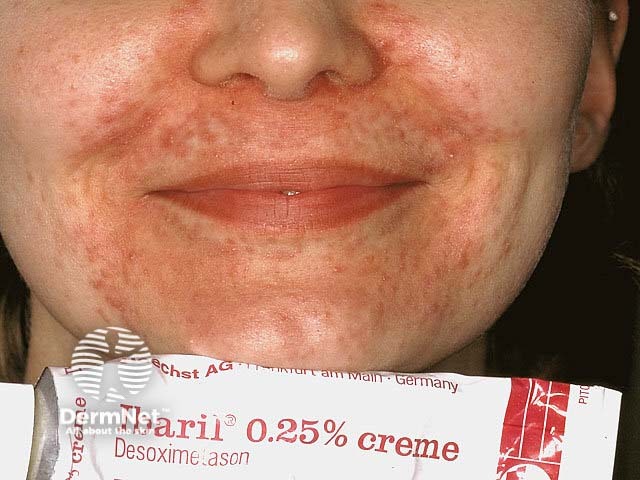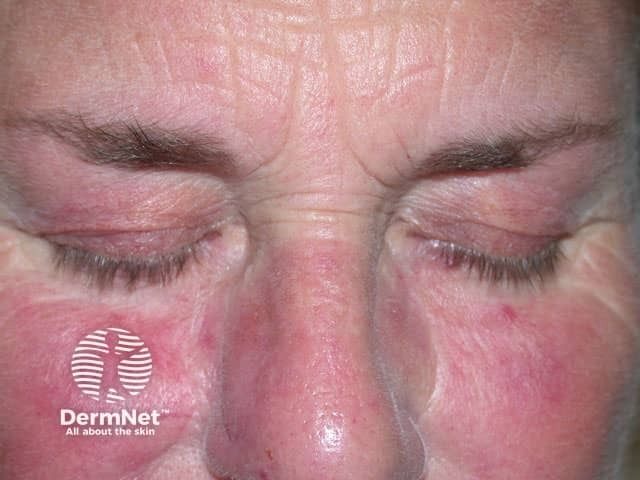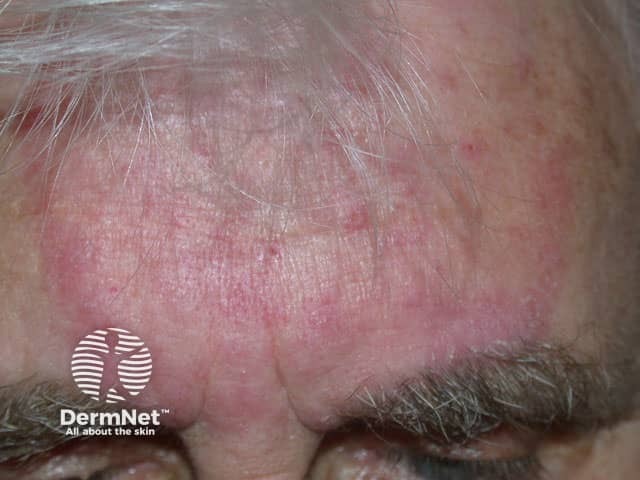Main menu
Common skin conditions

NEWS
Join DermNet PRO
Read more
Quick links
Author: Reviewed and updated by Dr Amanda Oakley Dermatologist, Hamilton, New Zealand; Vanessa Ngan, Staff Writer; and Clare Morrison, Copy Editor, June 2014.
Introduction
Demographics
Clinical features
Cause
Other cutaneous features of topical steroids
Treatment
Steroid rosacea is the name given to a rosacea-like condition on the mid-face caused by potent topical steroids or their withdrawal. It is a variant of perioificial dermatitis (also known as perioral dermatitis) or may be the same condition (note that periorificial dermatitis may occur in the absence of topical steroid). It is considered distinct from steroid acne, which is caused by oral corticosteroids.
Steroid rosacea is most often seen in adult women. However, it can affect males and children.
After several weeks of applying a topical steroid to the mid-forehead, eyelids, cheeks or chin, the affected area becomes red.
Steroid rosacea may become especially severe when the topical steroid cream is discontinued. This is called a rebound flare.

Steroid induced facial rosacea and perioral dermatitis

Steroid rosacea

Steroid rosacea
It is not known why topical steroids cause steroid rosacea. Ideas have included:
Steroid rosacea tends to be more likely to occur and more severe when strong steroids have been applied to facial skin. Conversely it is less likely to occur with mild steroids, particularly when applied infrequently. A similar rash has been reported from prolonged application of calcineurin inhibitors (tacrolimus ointment, pimecrolimus cream).
Many adverse effects have been described from the use of topical steroids.
Occasionally steroid rosacea is confused with tinea faciei and tinea incognita (often spelled incognito), fungal infections masked by topical steroids.
Periorificial dermatitis is a less severe steroid-induced rash, in which small papules develop around the lips, around the nose and around the eyelids.

Redness due to steroids

Steroid telangiectasia

Tinea faciei treated with topical steroid
Steroid rosacea responds well to treatment in most cases, although telangiectasia may persist long-term.